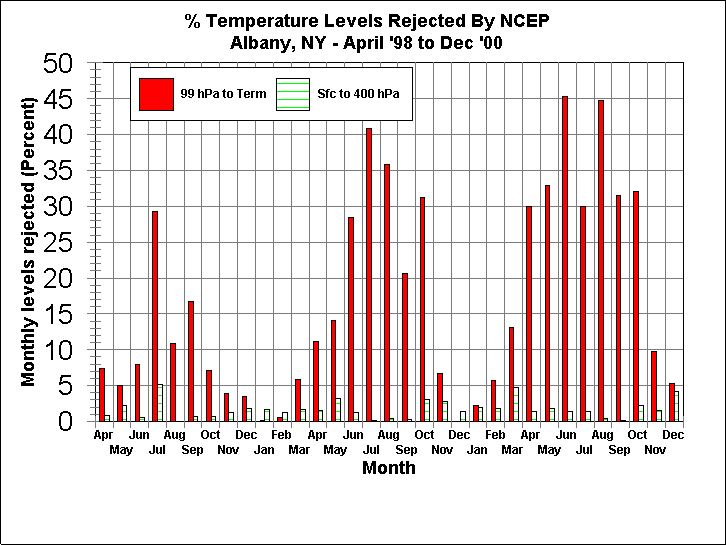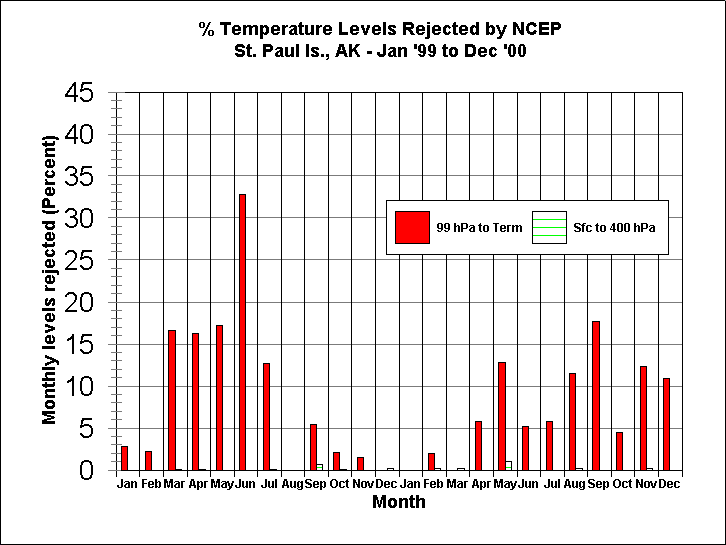Below is a chart showing the monthly percentage of Albany, New York, upper-air temperature levels rejected (i.e., erroneous data) by NCEP for two layers (surface to 400 hPa and 99 hPa to flight termination) . Note that the percentage of levels rejected above 100 hPa reaches a maximum during the Summer and a minimum during the Winter. This is not the case for the surface to 400 hPa layer. The seasonal fluctuation in data rejections above 100 hPa is caused mostly by solar/IR radiation affecting the temperature measurements. Summer soundings are taken mostly during daylight hours, while soundings taken during the Winter months are typically at night. The radiation affects the temperature accuracy more in the stratosphere than near the surface. Albany uses the Sippican Mark II Microsonde and at the present time no Solar/IR corrections are applied to the temperature data.
On October 1, 2003, NWS implemented a new Mark II radiosonde with a chip thermistor and the temperature rejections seen during the Summer months dropped dramatically.

Below is the same chart, but it shows the monthly percentage of Saint Paul Island, Alaska, upper-air temperature levels rejected by NCEP. Again, note that the percentage of levels rejected above 100 hPa reaches a maximum during the Summer and a minimum during the Winter. As with Albany, the seasonal fluctuation in data rejections above 100 hPa is caused mostly by solar/IR radiation affecting the temperature measurements. Saint Paul uses the VIZ-B2 radiosonde and NCEP applies Solar/IR corrections to the temperature and height data. However, these corrections are not sufficient to correct all the data. It's possible that Saint Paul's unique location (surrounded by ocean) and climate (high amounts of low clouds) create an IR radiation environment that the corrections can not properly handle.
